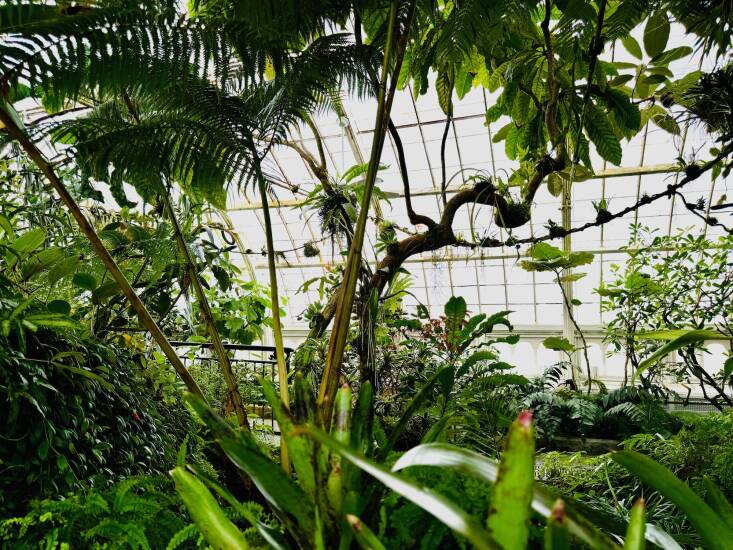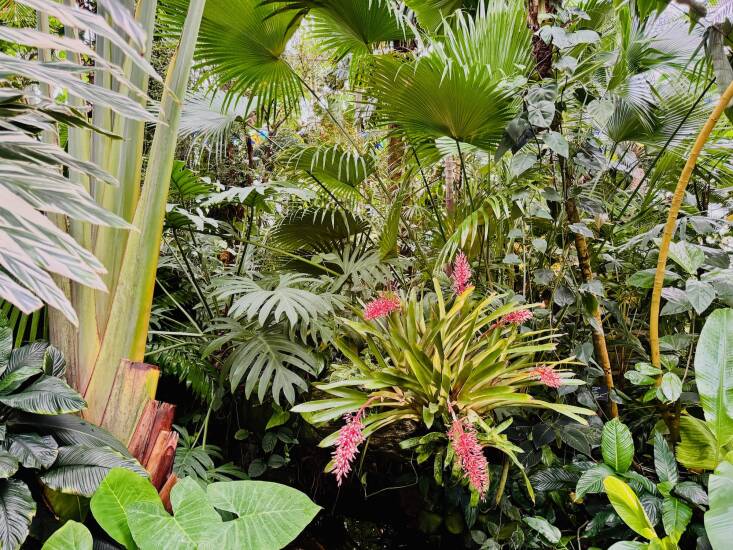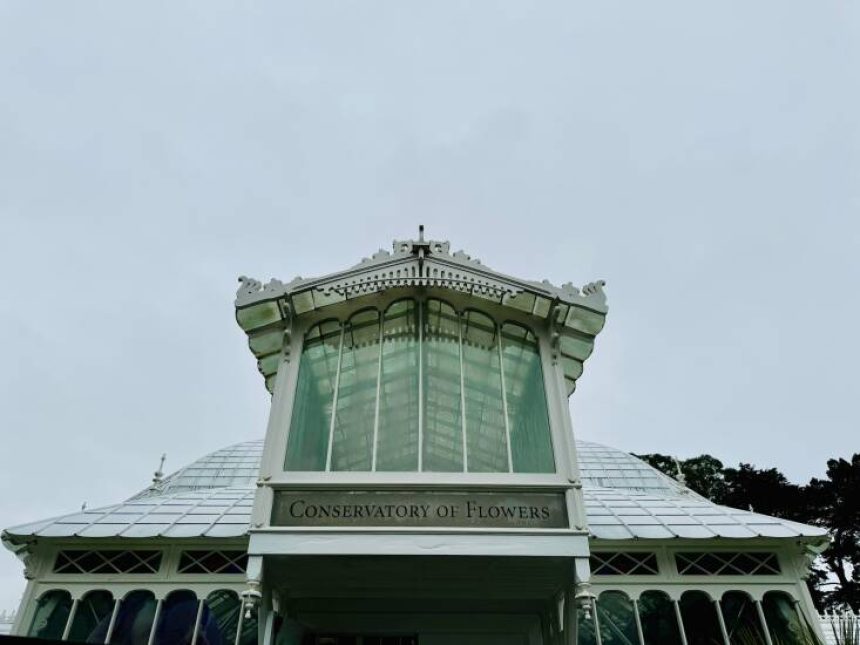As soon as it gets cold and wintry outside, I act like a moth to a flame and instantly gravitate to greenhouses, garden stores, and humid conservatories. One historic indoor spot that I have been visiting since childhood, especially in winter, is the Conservatory of Flowers in San Francisco’s Golden Gate Park.
Established in 1879, this Victorian-style building is not only the oldest structure in Golden Gate Park but also the oldest wood and glass conservatory in all of North America. What I’ve always appreciated about the Conservatory, with its large central dome and arched wood wings, is that it is organized into different galleries: Aquatics Plants, Highland Tropics, Lowland Tropics, Potted Plants, and the West Gallery featuring a stunning fern collection. Along the way, plant-curious visitors will discover impressively sized carnivorous pitcher plants, a world-renowned orchid collection, and massive water lilies. The Conservatory also houses the rare corpse flower, Amorphophallus titanum, which emits a strong rotting smell for 48 hours and draws a huge crowd every three to five years when it blooms.
The Conservatory’s story begins with James Lick, a Bay Area real estate mogul who ordered the prefabricated greenhouse kit from a New York firm but unfortunately died before it could be erected. Then in 1877, the greenhouse, still in crates, was bought by several wealthy San Francisco businessmen who then donated it to the San Francisco Park Commission for use in Golden Gate Park. After being built and opening its doors, the Conservatory became an instant success. The building has sustained damage over the years—a couple of fires in the early decades, the 1906 earthquake, and in 1995 a storm with high winds that severely damaged a large section of the building and roughly half the plant collection inside—but it has always bounced back.
The historic landmark building is maintained by the tradespeople of the SF Recreation and Parks Department. Inside, the diverse plant collection is under the careful and watchful eye of the Conservatory’s horticulture team. And in keeping with San Francisco’s policy of using less pesticides in all city parks and facilities, the Conservatory utilizes Integrated Pest Management, an ecosystem-based strategy that focuses on long-term prevention of pests or their damage through a combination of strategies. Ryan Guillou, Director of Collections and Conservation, adds, “We maintain the plant collection through thoughtful horticulture practice, including hand-watering all plants and through thoughtful curation.”
“The Conservatory of Flowers really is a special space not only for historical significance, but also for the public to get up close and personal to learn about plants from the tropics,” he continues. “We are working on creating more partnerships with other institutions and researchers to expand the diversity of our living collection and house more plants of wild collected origin and of conservation value.” Ryan adds that botanic gardens play an important role in protecting a species outside its native range and they want to elevate the Conservatory’s living collection to contribute toward those efforts.
Join me as we take a tour of this historic, pleasantly balmy conservatory:
Photography by Kier Holmes.










